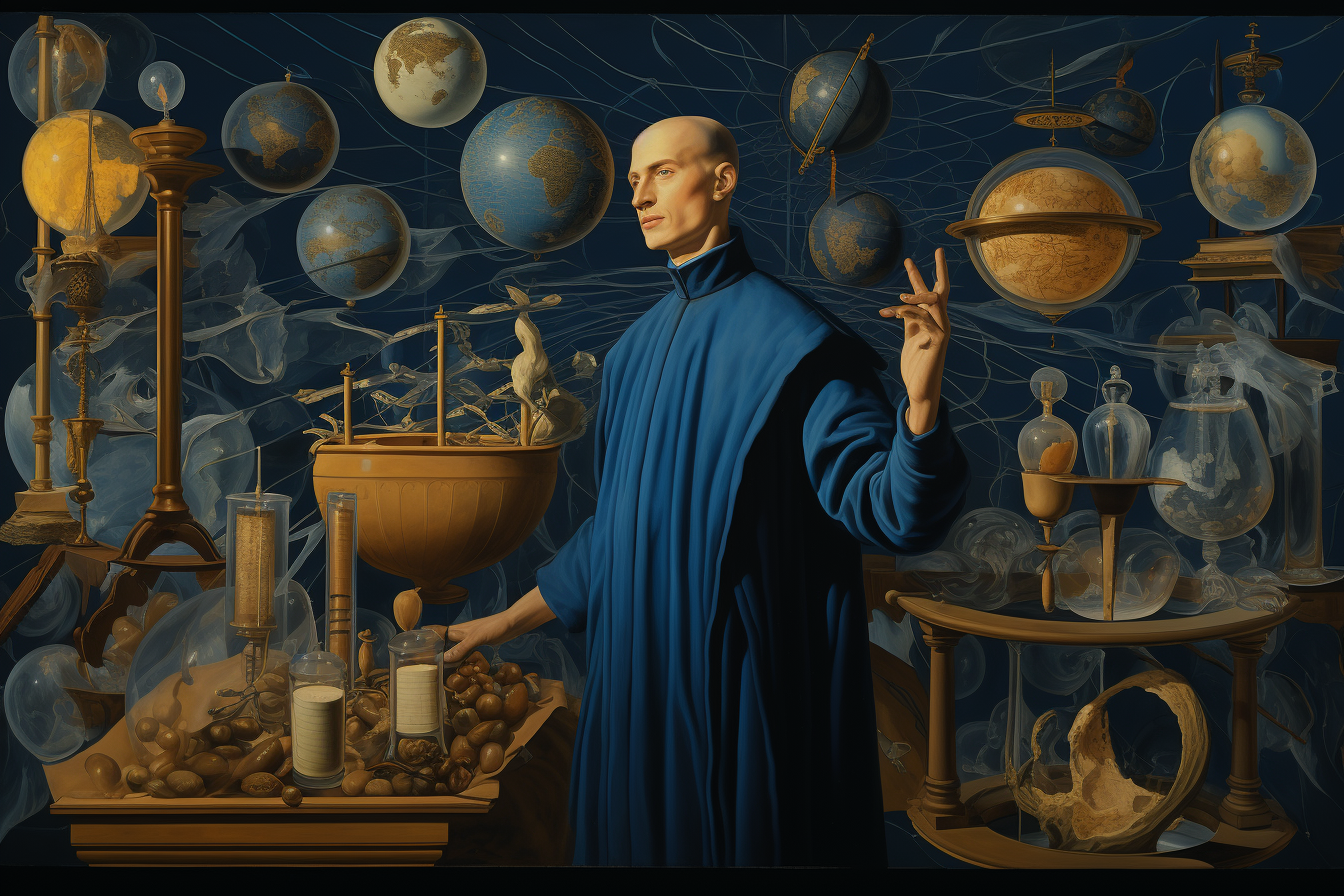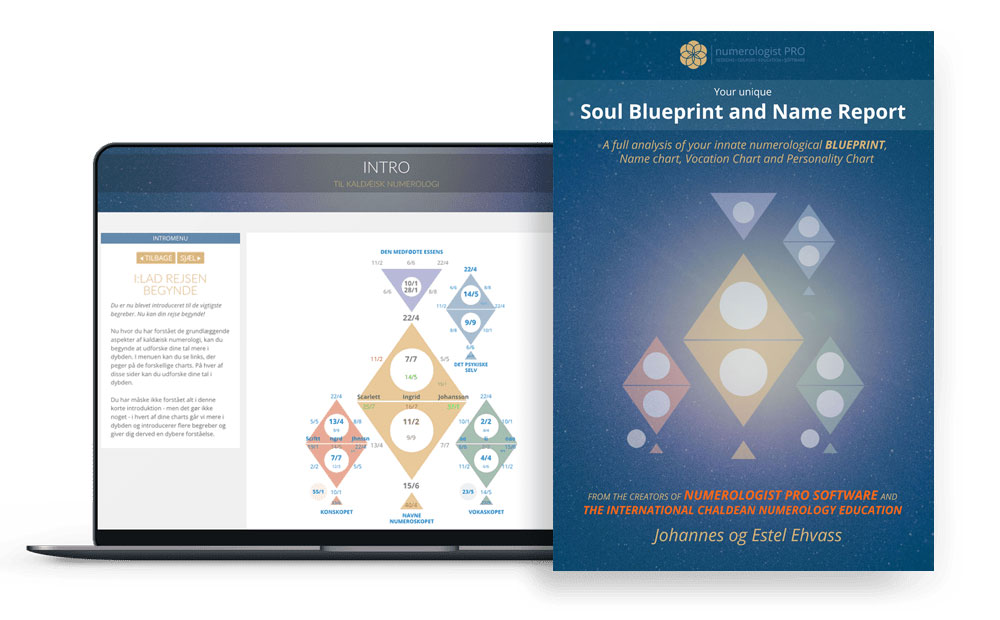Scientific Advancements and Astrology

Estel Ehvass
Welcome, dear reader! The Renaissance marked a pivotal time for many disciplines, and astrology was no exception. As society rekindled its passion for the arts and sciences, so too did it revisit the stars. This era, renowned for its rebirth of knowledge, saw astrology intertwine with emerging scientific studies and the broader awakening of human curiosity. The cosmos, during this period, served not just as a guide for destinies, but also as a testament to humanity's relentless pursuit of understanding. Dive with me into this intriguing era, where stars and society found renewed harmony.

During the Renaissance, a period characterized by rebirth and renewal, scientific advancements led to a profound shift in humanity’s understanding of the universe. Astrology, an ancient practice deeply intertwined with astronomy, found itself at a crossroads, grappling with new discoveries that challenged its foundational principles.
The New Astronomers: From Copernicus to Galileo
The Renaissance era brought forth a cadre of revolutionary astronomers whose observations and theories would disrupt centuries of established thought.
Nicolas Copernicus: Champion of Heliocentrism
Copernicus’s heliocentric model, positing the Sun at the center of the universe, was nothing short of revolutionary. His work, “De revolutionibus orbium coelestium,” marked the beginning of a massive paradigm shift. This model not only challenged the geocentric view endorsed by the Church but also necessitated a reevaluation of astrological principles predicated on Earth being at the center of the cosmic dance.
Galileo Galilei: The Telescope and New Celestial Observations
Galileo’s improvements to the telescope allowed for unparalleled observation of the heavens. His discovery of Jupiter’s moons, sunspots, and the cratered surface of the Moon provided irrefutable evidence against the long-held belief of celestial perfection. For astrologers, these revelations were cause for both excitement and introspection, prompting a reevaluation of astrological tenets in light of these new celestial bodies and phenomena.
Johannes Kepler and Planetary Motion
Kepler’s introduction of his laws of planetary motion heralded the end of the era dominated by the Ptolemaic system. His assertion that planets moved in elliptical orbits around the Sun required astrologers to revisit and revise interpretations and practices deeply entrenched in the Ptolemaic system’s circular orbits.
Astrology in the Age of the Telescope
The telescope became an indispensable tool for astronomers during the Renaissance, unveiling a universe teeming with stars and celestial phenomena that were previously invisible to the naked eye.
Discovering the Boundless Universe
With the telescope, new celestial bodies continually emerged, expanding the known universe. The discovery of distant stars, galaxies, and other celestial entities posed a significant question for astrologers: How do these new celestial bodies influence astrological readings and interpretations? The vastness of the cosmos suggested a more intricate web of celestial influence than previously thought.
Challenges to Celestial Perfection
The once-believed immaculate and unblemished heavens were now observed to be filled with imperfections. Sunspots, craters, and the turbulent atmospheres of planets posed significant philosophical questions. If the heavens were imperfect, could they still be the source of divine influence and guidance as believed by astrologers?
The Adaptation and Evolution of Astrological Practices
Despite the challenges posed by these new discoveries, astrology proved resilient. Astrologers began to incorporate the newly discovered celestial bodies into their readings. Uranus, Neptune, and later Pluto, once discovered, were endowed with astrological significances. The intricate dance of celestial bodies became a more elaborate and nuanced ballet in the light of new astronomical knowledge.
Challenging Ptolemaic Astrology
The scientific advancements of the Renaissance posed a direct challenge to the Ptolemaic system, the bedrock upon which much of traditional astrology was built.
Revolution in the Heavens
For over a millennium, the Ptolemaic system’s geocentric model held sway, with its epicycles and deferents explaining the peculiar motion of planets. The heliocentric model, bolstered by the works of Copernicus, Galileo, and Kepler, rendered the Ptolemaic system obsolete. This transition wasn’t merely astronomical but deeply astrological as well, requiring astrologers to reconsider the mechanics of celestial influences.
Planetary Aspects and Influence
The reinterpretation of planetary motions and positions meant that the angles or aspects they formed with each other, integral to astrological interpretations, needed reassessment. Planetary influences, their retrogrades, and their interactions took on new meanings. Astrologers of the era engaged in spirited debates, seeking to reconcile new astronomical knowledge with astrological traditions.
A Fusion of the Old and the New
The Renaissance was characterized not just by the overthrow of old ideas but by their synthesis with the new. Astrologers began melding age-old practices with new celestial knowledge, leading to a richer, more intricate tapestry of astrological thought and practice.
The Renaissance: A Crucible for Astrology
While the Renaissance posed significant challenges to astrology, it also presented opportunities. The era’s spirit of inquiry, discovery, and synthesis allowed astrology to evolve, adapt, and flourish in new ways. The dialogues, debates, and discourses of the time enriched the practice, ensuring its continuity into subsequent ages.
Astrology’s Resilience
Astrology’s enduring appeal and resilience are evident in its ability to adapt to the sweeping changes of the Renaissance. While it faced skepticism and challenges, it also found new avenues of expression and interpretation, reflecting the era’s dynamism and vitality.
Conclusion: An Era of Transformation
The Renaissance, with its groundbreaking scientific discoveries, reshaped humanity’s understanding of the universe. For astrology, it was a period of reflection, adaptation, and evolution. The period underscored astrology’s enduring nature, highlighting its ability to reinvent and reinvigorate itself in the face of transformative knowledge.
Scientific breakthroughs, discoveries, and inventions during the Renaissance
Timeline of scientific breakthroughs, discoveries, and inventions during the Renaissance, both related and unrelated to astrology, providing a broad picture of the era’s intellectual landscape:
1450s – Invention of the Printing Press
Johannes Gutenberg invents the printing press, revolutionizing the spread of knowledge and enabling the wide dissemination of scientific ideas.
1452 – Birth of Leonardo da Vinci
Leonardo da Vinci, whose studies will span various scientific fields and whose anatomical sketches will foreshadow modern medical understanding, is born.
1473 – Birth of Nicolaus Copernicus
Copernicus is born; he will later propose the heliocentric model of the universe, fundamentally changing astronomy and challenging astrological models.
1492 – Columbus’s Voyage
Christopher Columbus reaches the Americas, dramatically expanding the European understanding of world geography.
1497 – John Cabot Reaches North America
Explorer John Cabot lands in North America, opening new opportunities for European exploration and colonization.
1500 – Discovery of the New World
Amerigo Vespucci explores the coast of South America, leading to the recognition of the Americas as a new continent.
1502 – First Use of the Term “America”
The name “America” is used for the first time on a map to designate the New World, in honor of Amerigo Vespucci.
1510 – Peter Henlein Invents the Pocket Watch
The creation of the pocket watch provides a new level of precision in timekeeping, important for both scientific measurements and astrological calculations.
1513 – Vasco Núñez de Balboa Crosses the Isthmus of Panama
Balboa reaches the Pacific Ocean, proving that the New World is a separate landmass from Asia.
1534 – Jacques Cartier Explores the Gulf of St. Lawrence
Cartier’s voyages lay the groundwork for French claims in North America.
1543 – Publication of “De Revolutionibus Orbium Coelestium”
Nicolaus Copernicus publishes his work on the heliocentric model, fundamentally altering the course of astronomy.
1551 – Establishment of the Royal Observatory in Greenwich
The Royal Observatory is founded, enhancing navigational sciences and precision in astronomy.
1564 – Birth of Galileo Galilei
Galileo, whose astronomical observations will support the heliocentric model and whose work will lay the foundation for modern physics, is born.
1572 – Tycho Brahe Observes a Supernova
Brahe’s observations challenge the Aristotelian belief in the unchangeability of the stars and contribute to the advancement of observational astronomy.
1577 – Comet Observed by Tycho Brahe
Brahe observes a comet, leading to new understandings of celestial phenomena and further challenging the Earth-centered universe model.
1590 – The Microscope is Invented
Zacharias Janssen is credited with inventing the first compound microscope, providing a new way to study the natural world at the microscopic level.
1592 – Thermometer Invented by Galileo
Galileo invents an early form of the thermometer, introducing quantitative measurement to temperature observation.
1600 – William Gilbert Publishes “De Magnete”
Gilbert’s work on magnetism lays the groundwork for the modern understanding of magnetic forces and the Earth’s magnetic field.
1603 – Johann Bayer Creates Uranometria
Bayer publishes “Uranometria,” a star atlas that introduces a new system of stellar nomenclature and helps to standardize the field of astronomy.
1609 – Galileo’s Astronomical Observations with the Telescope
Galileo makes groundbreaking observations of the Moon, Jupiter’s moons, Venus phases, and more, using the newly invented telescope.
1610 – Publication of “Sidereus Nuncius”
Galileo publishes “Sidereus Nuncius,” detailing his telescopic discoveries and providing visual evidence for the Copernican system.
1614 – John Napier Introduces Logarithms
The invention of logarithms by John Napier provides astronomers and navigators with a new mathematical tool to simplify calculations.
1620 – Francis Bacon Advocates the Scientific Method
Francis Bacon’s “Novum Organum” is published, advocating for the scientific method and laying the foundation for the empirical approach in science.
1628 – William Harvey Describes Blood Circulation
Harvey publishes “Exercitatio Anatomica de Motu Cordis et Sanguinis in Animalibus,” explaining the circulatory system and revolutionizing the understanding of physiology.
1632 – Publication of “Dialogue Concerning the Two Chief World Systems”
Galileo’s “Dialogue” is published, defending the heliocentric theory and leading to his trial by the Inquisition.
1637 – René Descartes Publishes “Discourse on the Method”
Descartes lays out his approach to scientific inquiry, emphasizing doubt and analytical thought, which becomes foundational to modern philosophy and science.
1639 – Jeremiah Horrocks Observes the Transit of Venus
Horrocks’s observation of Venus crossing the face of the Sun provides new data for astronomical calculations and the scale of the solar system.

Johannes & Estel: Renowned authorities in Numerology, Astrology, and the esoteric arts. As the founders of Scandinavia's premier Numerology school, we're delighted to share our insights through this curated series on astrology. Dive in and discover the stars.
The Worlds Most Advanced Numerology Report

Your birthdate reveals your unique life purpose, potentials, talents, weaknesses, and karma in this life.
Your names show what you attract into your life regarding your career, relationships, happiness, money, and success.
GET THE REPORT HERE
Introduction to Astrology
The history of Astrology
Moving beyond deterministic astrology
Foundation of Astrology: Planets, Signs and Houses
Astrology and the Holographic Universe
The Holographic Universe
The Human Psyche as a Mirror to The Solar System
The Human Body as a Mirror to The Star Signs
Astrology Background
Egyptian Astrology
Mayan Astrology
Chinese Astrology
Indian Astrology - Jyotish
Celtic Astrology
Tibetan Astrology
Mesopotamian Astrology
Early Mesopotamian Astrology: The Dawn of Celestial Divination
Enuma Anu Enlil: The Epicenter of Babylonian Celestial Omen Interpretation
Babylonian and Chaldean Astrology
Babylonian and Chaldean Astrology
Chaldean influence and evolution
Chaldean Wisdom: Safeguarding and Transmitting Astrological Knowledge
Hellenistic Astrology
Hellenistic Astrology background
Claudius Ptolemy and Tetrabiblos
Vettius Valens
Dorotheus of Sidon
Persian Astrology
Persian Astrology background
Sassanian Astrology
Late Antiquity and The Transition Period
Late Antiquity and The Transition Period
Hellenistic to Islamic Transition: The Torchbearers of Astrological Wisdom
Islamic Golden Age
Arabian Astrology Background
Arabian Astrology Contributions
Medieval Astrology
Introduction: The Medieval Cosmos
Monastic Preservers: Astrological Knowledge in the Dark Ages
Astrology in Medieval Medicine
Kings, Queens, and Constellations: Astrology in the Medieval Court
The Church and the Stars: A Contentious Relationship
Universities and Scholastic Pursuits: Academic Astrology
Astronomy & Astrology: Tools of the Trade
Medieval Astrological Houses and the Synthesis of Traditions
Transition to the Renaissance: Humanism and the Celestial Arts
Reflections: Medieval Astrology's Echoes in Modern Practice
Astrological Art of the Middle Ages
Famous Medieval Astrologers
Medieval Astrological Texts
Renaissance Astrology
Renaissance Humanism and Astrology
Scientific Advancements and Astrology
The Social Fabric: Astrology in Everyday Renaissance Life
Court Astrologers of the Renaissance
Controversies and Conflicts: Astrology Under Scrutiny
Renaissance Texts and Authors: Continuation of a Tradition
Astrology and Art: Celestial Imagery in the Renaissance
Renaissance Astrological Practices: Evolutions and Innovations
End of the Renaissance: The Gradual Decline of Astrological Influence
Renaissance Astrology's Echo in the Modern World
Enlightenment Astrology
Introduction: The Enlightenment and Astrology
Challenging the Stars: Astrology's Critics during the Enlightenment
Astrology and the New World
Astrology in the 19th Century
The Dawn of Psychological Astrology
Astrology in the 20th Century: A Modern Renaissance
Astrological Associations and Schools
Modern Controversies and Astrology
Astrology and Popular Culture
Astrology and Technology
Current Trends and Future Directions in Astrology
Conclusion: Reflecting on Astrology's Evolution
The Planet Significances
The Sun in Astrology
The Moon in Astrology
Mercury in Astrology
Venus in Astrology
Mars in Astrology
Jupiter in Astrology
Saturn in Astrology
Uranus in Astrology
Neptune in Astrology
Pluto in Astrology
Chiron in Astrology
Black Moon Lilith in Astrology
Pars Fortuna in Astrology
Ceres in Astrology
Houses in Astrology
Introduction to Astrological Houses
The Angular Houses
The Succedent Houses
The Cadent Houses
The 1st House
The 2nd House
The 3rd House
The 4th House
The 5th House
The 6th House
The 7th House
The 8th House
The 9th House
The 10th House
The 11th House
The 12th House
Interaction Between Houses
Derived Houses, House Rulers, and Interceptions
Conclusion: Synthesizing House Knowledge
All Materials © 2023 & 2024 Numerologist PRO
Terms of Service: Information provided by Numerologist PRO and/or from this web site is not intended as advice (medical, psychological, financial or other), nor is it intended to replace your work with a qualified professional (medical or otherwise). You should maintain your relationship with your providers and consider the services of this site as informational only. Any information, stories, examples, or testimonials presented on this website do not constitute a warranty, guarantee, or prediction regarding the outcome of an individual. This web site is a sharing of knowledge and information of numerology/energy work based on the experiences of Numerologist PRO. You are encouraged to make your own decisions based on your own research and inner guidance. By booking and receiving services, you agree to fully release and hold harmless Numerologist PRO and all it's affiliated numerologists from and against any liability or claim that may arise out of or in connection with their service(s).
Numerologist PRO © 2021

CONTACT
numerologist@numerologistpro.com
LIKE US, and get free numerology tools, info about your personal numbers, best business dates of the year - and more!
YOUR FREE NUMEROSCOPE CHART
Enter your name and email below and get access to our free online numerology chart tool.